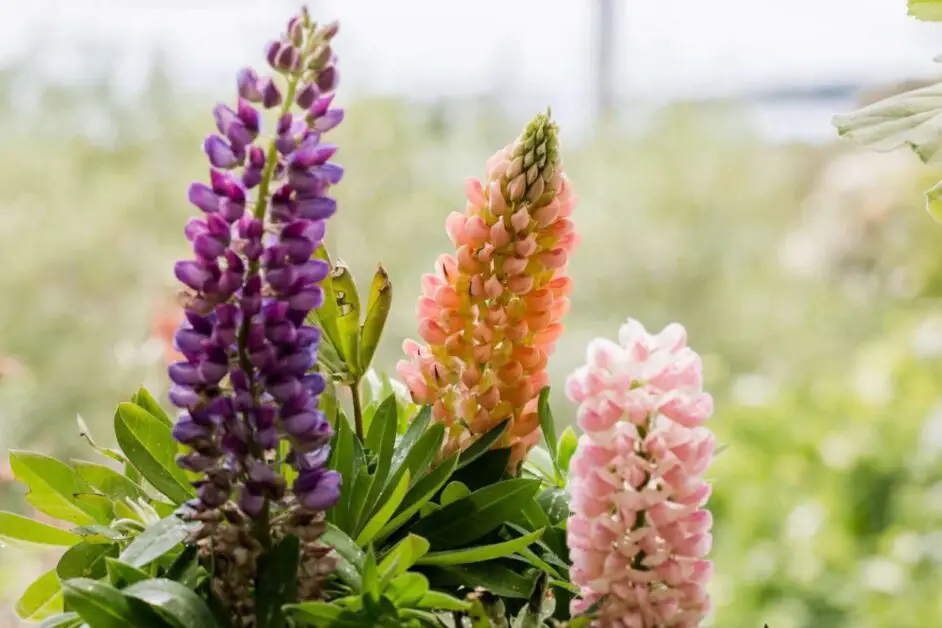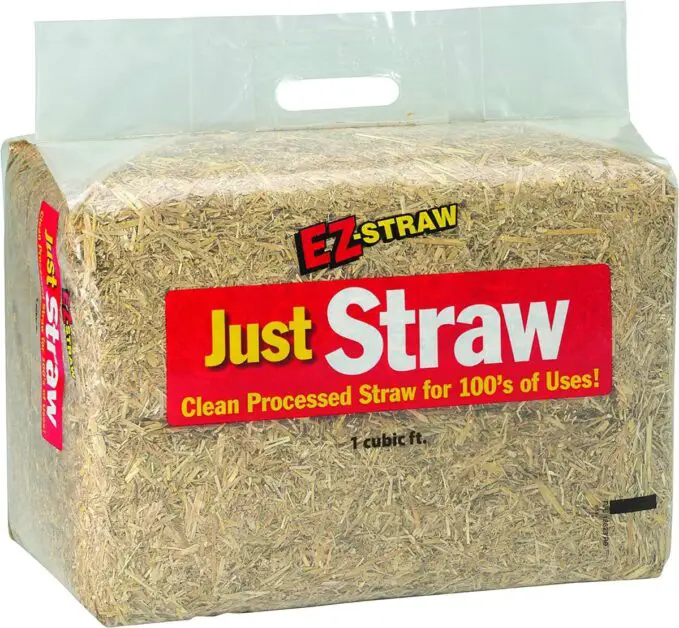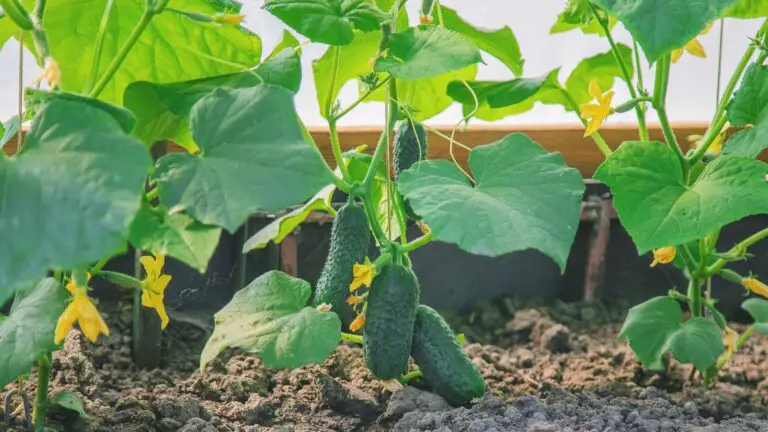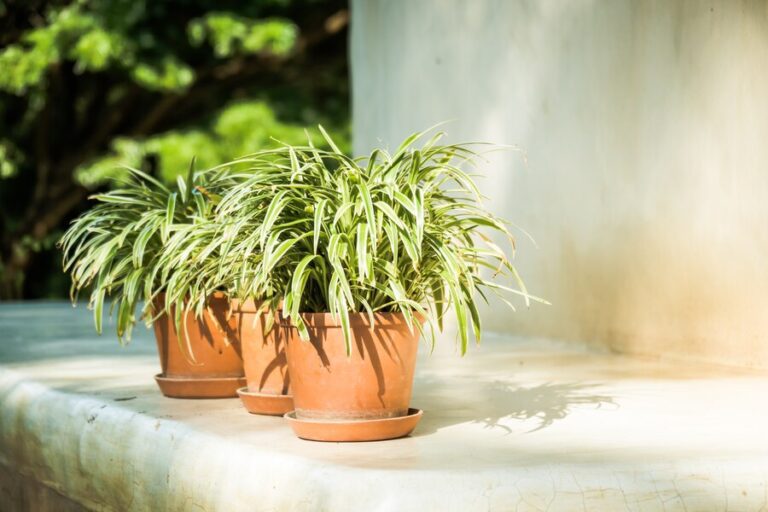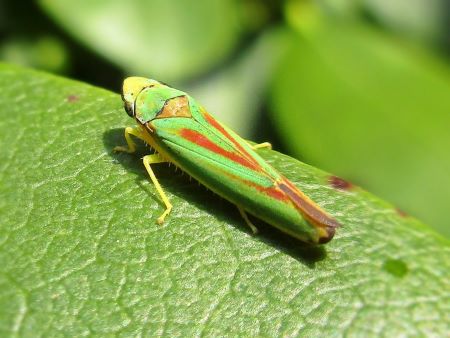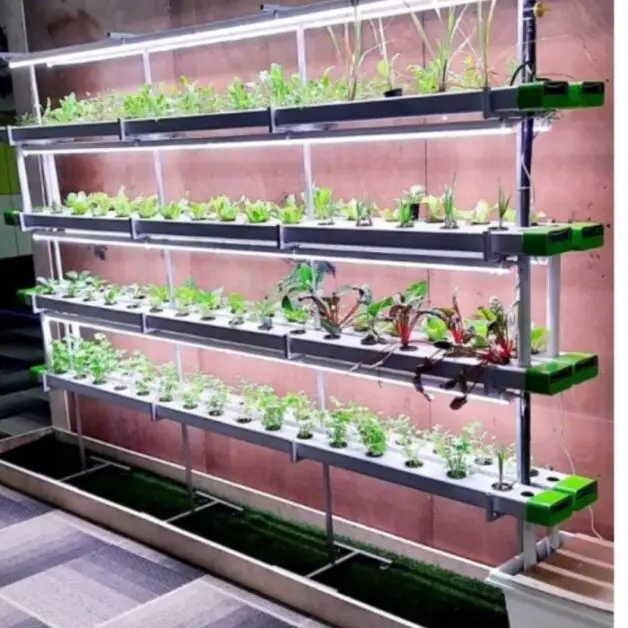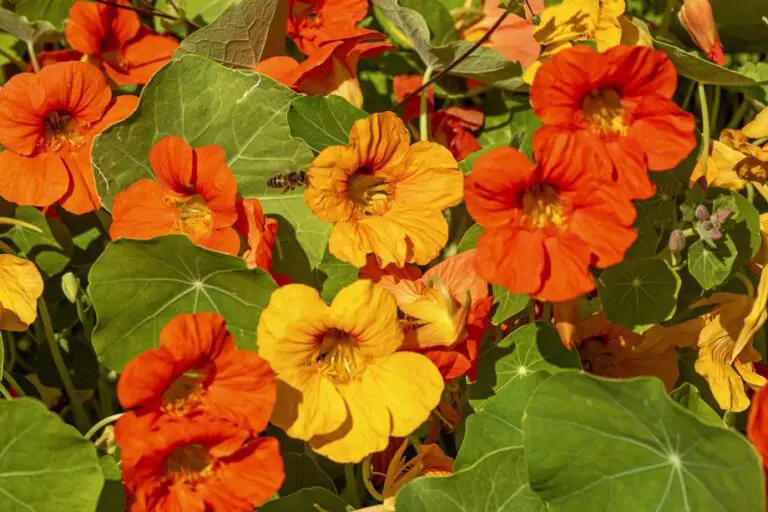How to Grow Lupine: A Guide to Cultivating These Stunning and Hardy Flowers
Did you know that lupines, with their vibrant hues and resilient nature, have been captivating gardeners for centuries? From their striking spires of blossoms to their ability to thrive in various conditions, these stunning flowers are a must-have for any garden enthusiast. Whether you’re a seasoned green thumb or just starting out, mastering the art of cultivating lupines can elevate your garden to new heights of beauty and charm.
In this comprehensive guide, we’ll walk you through everything you need to know about growing lupines in your own backyard. From selecting the perfect spot to nurturing them to full bloom, we’ve got you covered. So, grab your gardening gloves and let’s dive into the wonderful world of lupines!
Table of Contents
Planting Lupine: Understanding the Basics
Lupine is a versatile and vibrant flowering plant that can add a burst of color and beauty to any garden. Whether you are a seasoned gardener or a beginner with a green thumb, understanding the basics of planting lupine is essential for successful growth.

- Sunlight Exposure:
- Full Sun: Lupines thrive in areas with full sunlight. Choose a spot that receives at least six hours of direct sunlight each day.
- Avoid shady locations, as insufficient sunlight can hinder their growth.
- Well-Drained Soil:
- Ideal Soil: Lupines prefer well-drained soil.
- Avoid Waterlogged Areas: Ensure that the chosen spot does not hold water or become waterlogged.
- Consider adding organic matter or sand to improve drainage if needed.
“The Lupine Cultivation Handbook has been an indispensable resource in my gardening journey. Packed with expert advice and comprehensive information, this book has guided me through every step of growing lupines successfully. From propagation to maintenance, its clear and concise instructions have helped me cultivate vibrant lupine blooms with confidence. Whether you’re a beginner or seasoned gardener, this handbook is a must-have for anyone looking to enhance their gardening skills and add beauty to their landscape.”
- Comprehensive Information: The book likely provides in-depth knowledge on various aspects of lupine cultivation, including propagation, maintenance, and care tips.
- Expert Guidance: Authors of such books often have expertise in the subject matter, offering valuable insights and advice based on their experience.
- Illustrations and Images: Many gardening books include illustrations and images that enhance understanding, making it easier for readers to follow instructions and visualize techniques.
- Reference Material: A book on lupine cultivation can serve as a valuable reference material for both novice and experienced gardeners, offering guidance on growing lupines successfully.
- Inspiration: Reading about lupines and their cultivation may inspire readers to explore new gardening techniques, experiment with different varieties, and enhance their gardening skills.
- Limited Scope: Depending on the book, it may focus narrowly on specific aspects of lupine cultivation, potentially leaving out broader topics or alternative methods.
- Availability: Some books on niche topics like lupine cultivation may have limited availability, making it challenging for readers to access the information they need.
- Cost: Specialized gardening books can be more expensive than general gardening guides, especially if they contain detailed information or are authored by experts in the field.
- Subjective Content: Like any book, opinions and recommendations on lupine cultivation may vary among authors, and readers should consider multiple sources for a well-rounded perspective.
- Updates Required: As new information and techniques emerge in the field of gardening, older books may become outdated, necessitating the purchase of newer editions or supplemental materials.
Choosing the Right Location for Your Lupine
Choosing the right location is crucial for the successful growth of your lupine. These beautiful flowering plants thrive in well-drained soil and require full sunlight to reach their full potential. When selecting a spot in your garden for planting lupine, consider the following factors.
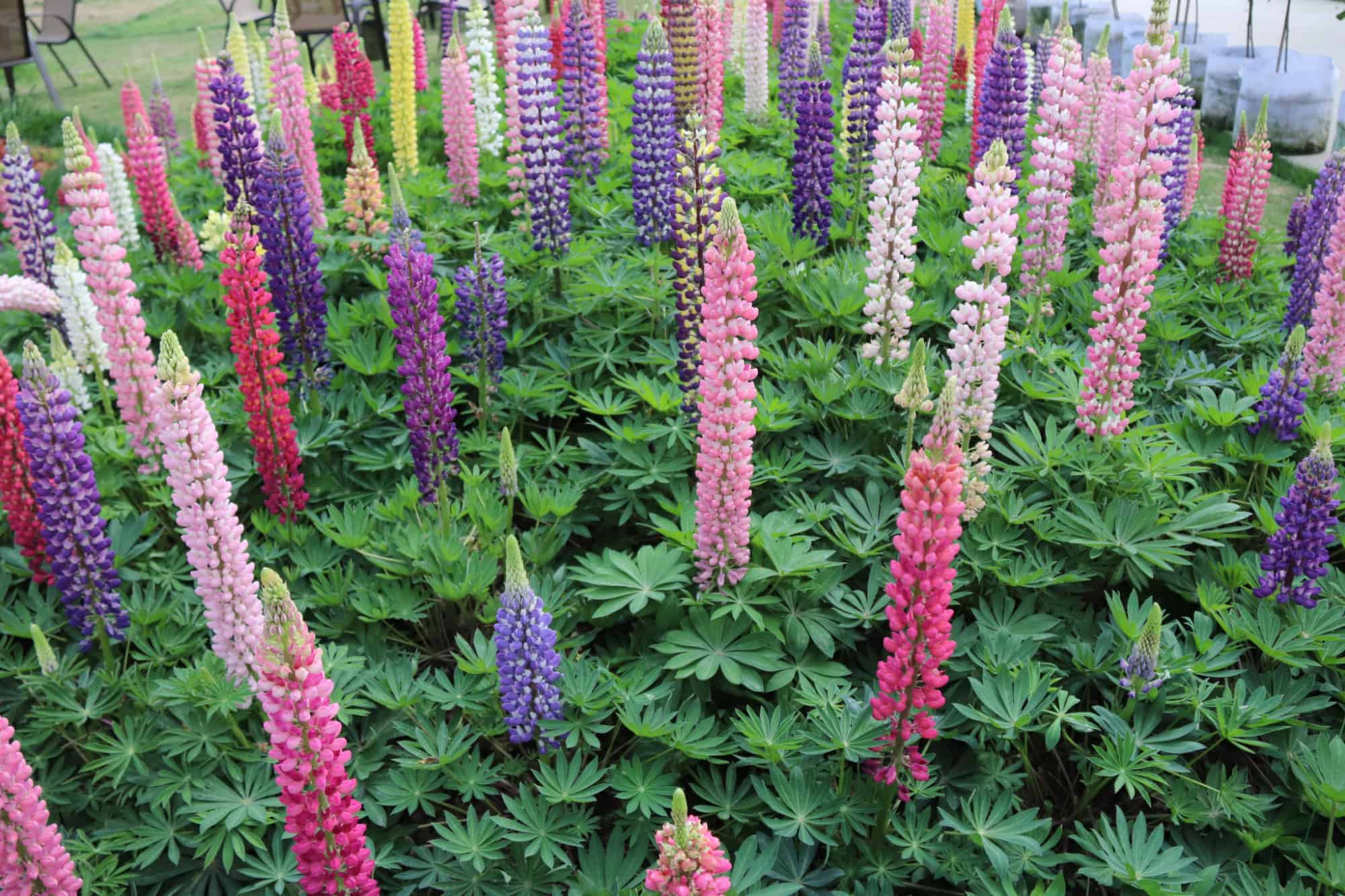
- Choose a sunny spot: Ensure the area has ample sunlight, at least 6 to 8 hours daily, free from tall trees or structures that may cast shadows over the lupine plants. Sunlight is crucial for their healthy growth and vibrant blooms.
- Check soil conditions: Lupines thrive in slightly acidic to neutral soil with a pH level between 6.0 and 7.0. It’s essential to have well-drained soil to prevent root rot. Test the soil’s pH level before planting and amend it if needed by incorporating organic matter or lime to achieve the optimal range.
By carefully selecting the right location for your lupine, you are setting the stage for their long-term health and vitality. With proper consideration of sunlight exposure and soil conditions, you can create an ideal environment where your lupine plants will thrive and provide a stunning display of color in your garden. Now that we’ve covered the importance of location selection, let’s move on to preparing the soil to optimize the growth of your lupine.
Preparing the Soil for Optimal Growth
Preparing the soil is a crucial step in ensuring optimal growth for your lupine plants. This process sets the foundation for healthy root development and nutrient absorption, ultimately leading to vibrant and thriving lupine plants. To prepare the soil for optimal growth, you must consider factors such as soil composition, pH levels, and drainage.
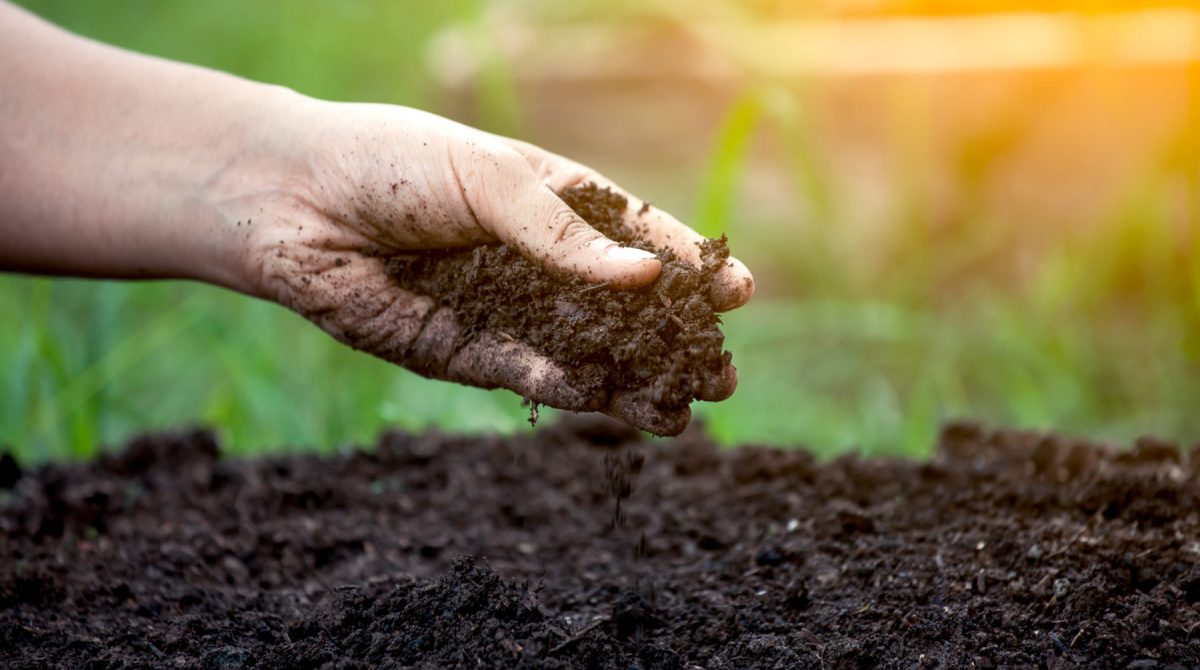
- Soil Composition Assessment: Check the soil’s texture; lupines prefer well-drained soil with a loose, friable texture. If the soil is heavy and clay-like, amend it with organic matter like compost or well-rotted manure to enhance structure and promote root penetration.
- pH Level Testing: Test the soil’s pH levels; lupines thrive in slightly acidic to neutral soil (pH 6.0 to 7.5). Adjust pH accordingly: raise it with agricultural lime if too acidic, or lower it with elemental sulfur if too alkaline. Maintaining optimal pH ensures better nutrients availability for the plants.
- Ensure Proper Drainage: Verify the planting area’s drainage; lupines require well-drained soil to prevent issues like root rot. Improve drainage by incorporating organic materials or creating raised beds, especially if the soil tends to retain water excessively.
By following these soil preparation guidelines, you will provide an ideal growing environment for your lupine plants. Remember, healthy roots lead to healthy plants, and a well-prepared soil plays a significant role in achieving that outcome.
Selecting the Ideal Lupine Varieties for Your Garden
Selecting the ideal lupine varieties for your garden is an important step towards creating a vibrant and visually appealing landscape. With a wide range of lupine options available, it can be overwhelming to choose the right ones for your specific needs. However, by considering a few key factors, you can make an informed decision that will result in successful lupine cultivation.
| Variety | Characteristics | Advantages | Disadvantages |
|---|---|---|---|
| The Governor | – Botanical Name: Lupinus polyphyllus ‘The Governor’- Height: 2-4 feet- Flowers: Violet and white racemes- Leaves: Palm-shaped, bright green and slender | – Self-spreading seeds- Reliable perennial- Easy to grow | – Toxic if ingested- Difficult to transplant due to deep taproots |
| Riverbank | – Botanical Name: Lupinus rivularis ‘Riverbank’- Height: 1-3 feet- Flowers: Dense foliage with shrub-like habit- Sun Requirements: Full sun to partial shade | – Erosion control properties- Thrives near river edges with moist soil Hardy in zones 7-9 | – Toxic if ingested- May resent disturbance due to deep taproots |
| Gallery Series | – Botanical Name: Lupinus polyphyllus ‘Gallery Series’- Height: 1-2 feet- Flowers: Compact spikes in various colors- Sun Requirements: Full sun to partial shade | – Compact growth habit- Abundant blooms- Suitable for smaller spaces | – Shorter flowering period compared to taller varieties- May require staking |
| Russell Hybrids | – Botanical Name: Lupinus polyphyllus ‘Russell Hybrids’- Height: 2-4 feet- Flowers: Diverse colors in tall spires- Sun Requirements: Full sun to partial shade | – Wide color range- Stately appearance- Long-lasting cut flowers | – May need staking to support tall flower spikes- Short-lived perennial in some regions |
By considering the climate, growing conditions, and desired characteristics of lupine varieties, you can confidently select the ideal ones for your garden. Remember to thoroughly research each variety and consult reputable sources to ensure their suitability and success in your specific gardening environment. With the right lupine varieties, you can enjoy a beautiful and thriving garden filled with these magnificent flowering plants.
When and How to Sow Lupine Seeds
Sowing lupine seeds at the right time and in the right way can greatly contribute to the success of your lupine garden. It is generally recommended to sow lupine seeds in the spring, after the last frost has passed and the soil has begun to warm up. This timing allows for optimal germination and establishment of the seedlings.
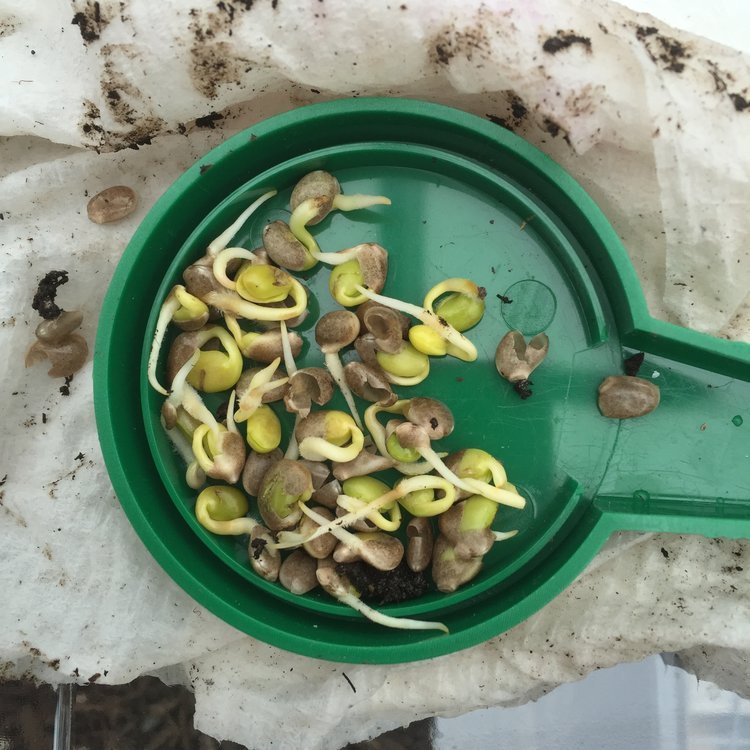
- Select the Right Location:
- Choose a well-draining location that receives full sunlight.
- Lupines thrive in slightly acidic to neutral soil with a pH range of 6.0 to 7.5.
- Prepare the Soil:
- Remove weeds, rocks, and debris from the soil.
- Loosen the soil using a garden fork or tiller to create a loose and fertile bed for the seeds.
- Scatter the Seeds:
- Scatter lupine seeds on the soil surface.
- Aim for a spacing of about 12 to 18 inches apart.
- Planting Depth:
- Gently press the seeds into the soil, ensuring good seed-to-soil contact.
- Plant them at a depth of about 1/4 inch.
- Seed Coat Treatment:
- Lupine seeds have a hard seed coat.
- To improve germination rates, either file the seed coat slightly or soak the seeds in warm water for 24 hours before sowing.
- Maintain Moisture:
- Cover the sown area with a thin layer of straw or mulch to retain moisture.
- Protect the seeds from drying out during germination.
- Thin Seedlings:
- Once lupine seedlings emerge, thin them out if overcrowded.
- Leave the strongest and healthiest plants.
- Regular Watering:
- Provide regular watering to keep the soil evenly moist but not waterlogged.
By following these guidelines for sowing lupine seeds, you can increase the chances of successful germination and establish a thriving lupine garden.
Using EZ-Straw Clean Processed Straw Mulch has revolutionized my gardening experience. This natural mulch not only retains moisture in the soil, reducing the need for frequent watering, but also effectively suppresses weed growth, saving me hours of tedious weeding. Its insulation properties have kept my plant roots protected from extreme temperatures, ensuring healthier growth throughout the seasons. Plus, its easy application process makes it a convenient choice for both novice and experienced gardeners alike. Overall, EZ-Straw Mulch has become an essential tool in maintaining a thriving and beautiful garden.
✅ Moisture Retention: Straw mulch helps retain soil moisture, reducing the need for frequent watering and promoting healthier plant growth, especially during hot and dry periods.
✅ Weed Suppression: Mulching with straw can help suppress weed growth by blocking sunlight from reaching weed seeds, reducing the need for manual weeding and minimizing competition for nutrients.
✅ Erosion Control: When applied correctly, straw mulch can help prevent soil erosion by protecting the soil surface from rain and wind erosion, particularly on sloped areas.
✅ Insulation: Straw mulch provides insulation for plant roots, helping to regulate soil temperature and protect against extreme temperatures, both hot and cold.
❌ Decomposition: Straw mulch decomposes relatively quickly compared to other mulch types, requiring more frequent replenishment to maintain its effectiveness.
❌ Nutrient Content: Straw mulch has minimal nutrient content, so additional fertilization may be necessary to provide plants with essential nutrients for optimal growth.
❌ Potential Seed Contamination: Straw mulch may contain weed seeds or pathogens that can be introduced into the garden, leading to weed problems or disease issues.
❌ Wind Displacement: Loose straw mulch may be susceptible to displacement by wind, especially in areas with strong winds or during storms, requiring periodic reapplication to maintain coverage.
Caring for Your Lupine Seedlings
Once your lupine seedlings have emerged, it is crucial to provide them with the proper care to ensure their healthy growth and development. Here are some essential tips for caring for your lupine seedlings.

- Watering: Keep lupine seedlings consistently moist, avoiding over-saturation. Water gently at the base to prevent foliage splashing. Adjust watering on hot days but avoid drowning seedlings.
- Sunlight Requirements: Provide full sun conditions, with 6-8 hours of direct sunlight daily. Indoors, place near a south-facing window; outdoors, choose a sunny garden spot for robust growth.
- Fertilization: Apply balanced, slow-release fertilizer when seedlings are 4-6 weeks old. Follow package instructions to avoid over-fertilizing, which can lead to lush foliage but fewer blooms.
- Weed Control: Keep the area around seedlings weed-free to prevent competition for nutrients, water, and sunlight. Regularly remove weeds and consider mulching to suppress weed growth and retain soil moisture.
- Pest and Disease Management: Monitor for pests like aphids and slugs, as well as diseases like powdery mildew. Take prompt action using organic methods such as handpicking insects or using insecticidal soap to protect seedlings.
Following these care steps will ensure your lupine seedlings thrive, rewarding you with vibrant blooms and a beautiful garden addition.
Transplanting Lupine Seedlings into the Garden
Transplanting lupine seedlings into the garden is a crucial step that will ensure the continued growth and development of your plants.
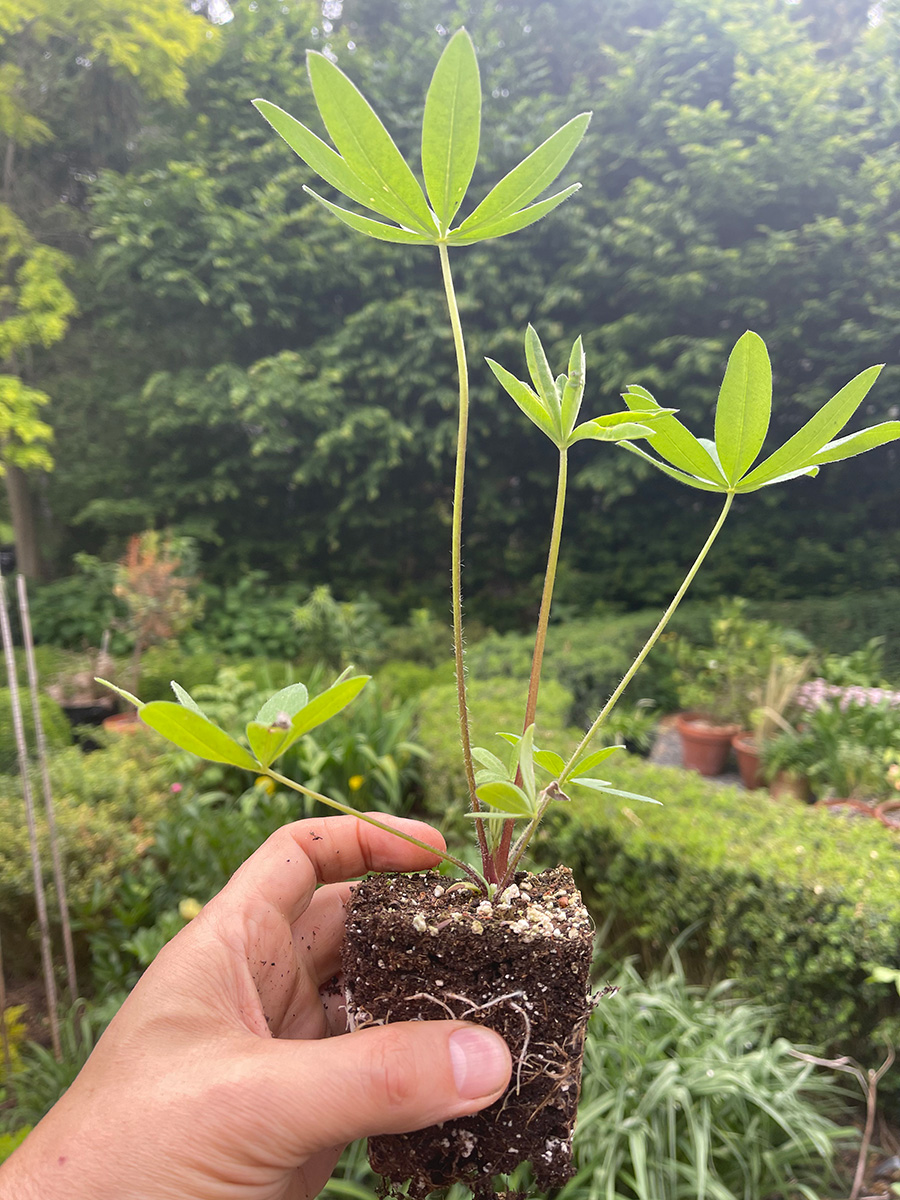
- Seedling Height:
- Transplant lupine seedlings when they reach a height of around 4 to 6 inches.
- This ensures that they are well-established and ready for outdoor planting.
- Choose the Right Location:
- Select an appropriate spot in your garden that meets the specific requirements of lupine plants.
- Lupines thrive in well-drained soil with a neutral to slightly acidic pH.
- Ensure the location receives full sun to partial shade (at least 6 hours of direct sunlight per day).
- Spacing:
- Consider the mature height of lupine plants (up to 4 feet).
- Provide enough space between seedlings to accommodate their growth.
- Aim for a spacing of about 12 to 18 inches between plants.
- Soil Preparation:
- Incorporate organic matter (such as compost) into the soil.
- Ensure good drainage to create an optimal growing environment.
- Transplant Carefully:
- Gently remove seedlings from their containers or nursery pots.
- Plant them at the same depth as they were in the containers.
- Water thoroughly after transplanting to help them settle in.
Remember to monitor the newly transplanted lupine seedlings and provide regular care as they establish themselves in their new home. Happy gardening!
Providing Adequate Sunlight and Water for Lupine
Sunlight and water are two essential elements that contribute to the healthy growth of lupine plants. Providing the proper amount of both is crucial to ensure their optimal development and overall vitality.
:max_bytes(150000):strip_icc()/growing-lupine-flowers-1316034-1-15566031827b41b1b992f64a6d7f7d23.jpg)
However, it is important to note that lupine plants are susceptible to root rot, so it’s crucial to ensure proper drainage to prevent waterlogging. Regularly monitoring the moisture levels of the soil and adjusting watering accordingly is key in maintaining a healthy balance for your lupine plants.
Fertilizing Lupine: Tips for Nutrient-Rich Soil
Fertilizing lupine is crucial for promoting healthy growth and vibrant blooms. By providing your lupine plants with the right nutrients, you can enhance their overall health and ensure a bountiful display of colorful flowers. Here are some essential tips for achieving nutrient-rich soil and helping your lupine thrive.

- Phosphorus-Rich Fertilizer:
- Incorporate a phosphorus-rich fertilizer into the soil before planting or during early growth.
- Look for fertilizers with a high middle number on the label (indicating higher phosphorus concentration).
- Phosphorus is essential for root development and flowering.
- Balanced Nutrients:
- Provide a balanced fertilizer with equal parts nitrogen, phosphorus, and potassium.
- Avoid excessive nitrogen, as it can lead to lush foliage at the expense of flowers.
- Organic Matter:
- Enrich the soil by adding organic matter such as compost or well-rotted manure.
- These materials release nutrients slowly, ensuring a steady supply throughout the growing season.
Remember to follow dosage instructions and regularly monitor your plants’ progress to adjust fertilization as needed. By providing your lupine with nutrient-rich soil, you’ll be rewarded with beautiful and thriving plants that will add vibrancy to your garden.
Protecting Lupine from Pests and Diseases
Lupine plants are generally hardy and resistant to most pests and diseases. However, like any other garden plant, they can still fall prey to certain insects and ailments. Understanding the common pests and diseases that can affect your lupine plants is crucial in ensuring their health and longevity.
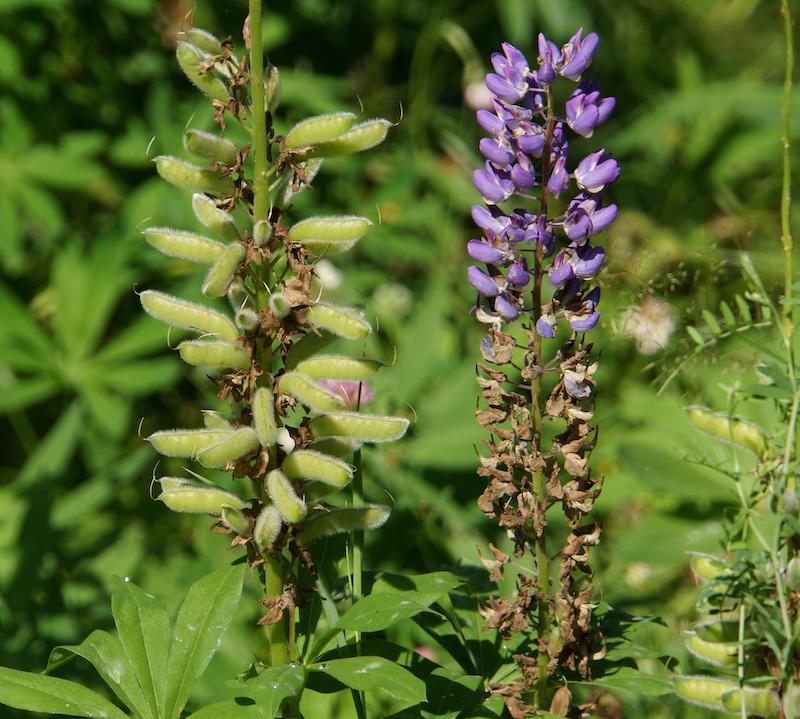
- Aphids:
- Description: Aphids are small insects that feed on plant sap, causing yellowing leaves and stunted growth.
- Prevention and Treatment:
- Monitor Regularly: Regularly inspect your lupine plants for signs of aphids (distorted leaves, sticky residue).
- Natural Methods:
- Diluted Soap Water: Spray the affected areas with a solution of water and mild soap.
- Ladybugs: Introduce ladybugs, which are natural aphid predators.
- Chemical Insecticides: In severe cases, use insecticides labeled for aphid control. Follow instructions carefully.
- Powdery Mildew:
- Description: Powdery mildew is a fungal disease that appears as a white powdery coating on leaves, stems, and flowers.
- Prevention:
- Airflow: Provide adequate airflow around the plants to reduce humidity.
- Moisture Control: Avoid overwatering and ensure proper drainage.
- Pruning: Remove overcrowded areas to improve air circulation.
- Treatment:
- Fungicides: If powdery mildew persists, use fungicides specifically targeting this disease. Follow recommendations.
Remember to maintain a vigilant eye on your lupine plants and take preventive measures to keep them healthy. Happy gardening! 🌼🌿
Pruning Lupine for Healthier and Fuller Plants
Lupine plants can benefit greatly from regular pruning, as it promotes healthier growth and fuller plants. Pruning helps maintain the overall shape and size of the plant, encourages the production of more blooms, and prevents the spread of diseases. However, it is important to understand the correct techniques and timing for pruning lupines to ensure the best results.
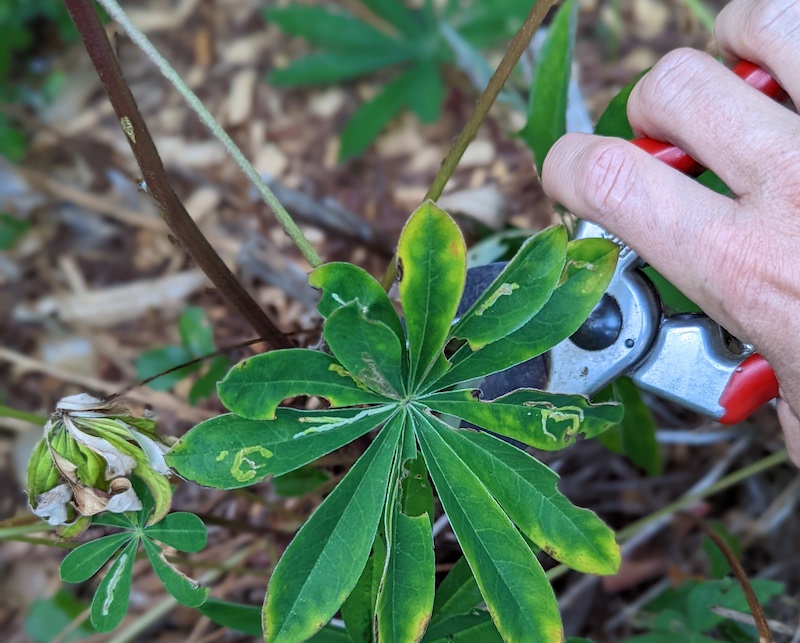
- Timing: Prune lupines in early spring before new growth emerges to redirect energy for new shoots and blooms.
- Method: Trim lupines down to the base, leaving a few inches above the soil to stimulate new branches and fuller growth.
- Maintenance: Remove dead, damaged, or diseased branches to enhance plant health and prevent issues like disease spread or pest infestations.
- Tool Care: Use clean and sharp pruning shears for clean cuts, reducing the risk of infections and promoting plant health.
- Inspection: Take advantage of pruning to closely inspect the plant for signs of disease or pest activity, enabling prompt intervention if needed.
In conclusion, pruning lupine plants plays a vital role in maintaining their health and promoting fuller growth. By following proper pruning techniques and timing, you can shape the plant, encourage more blooms, and prevent the spread of diseases. Regular pruning, along with other necessary care practices, will ensure that your lupine plants thrive and add beauty to your garden.
Harvesting Lupine Seeds for Future Planting
Harvesting lupine seeds is a rewarding task that allows you to propagate new plants and continue enjoying the vibrant beauty of these flowers in your garden. Ideally, lupine seeds should be harvested when the seed pods are dry and brittle. This typically occurs towards the end of the flowering season, usually in late summer or early fall.

Look for lupine seed pods that have turned brown and are beginning to crack open.
These mature pods contain viable seeds.
Carefully remove the mature seed pods from the plant.
Handle them gently to avoid damaging the seeds inside.
Place the harvested pods in a paper bag or container.
Allow them to fully dry in a cool, dry location for about one to two weeks.
Proper drying ensures seed viability.
Once the pods are thoroughly dried, gently squeeze them to release the seeds.
Lupine seeds are typically small and round.
Lupine seeds may vary in color depending on the variety you are growing.
Collect the seeds in a clean container.
Store the lupine seeds in a cool, dry place until you are ready to plant them.
With proper storage, lupine seeds can remain viable for several years.
Happy gardening, and enjoy sowing these beautiful lupine flowers in your garden! 🌼🌿
Extending the Lifespan of Your Lupine Plants
To ensure the longevity and continued health of your lupine plants, there are several practices you can implement.

- Proper Watering: Ensure consistent moisture without overwatering, as lupines are susceptible to root rot and fungal diseases. Water deeply, allowing the top few inches of soil to dry out between watering to prevent waterlogging.
- Mulching: Apply organic mulch, like straw or shredded bark, around lupine plants to conserve moisture, regulate soil temperature, suppress weeds, and provide nutrients as it decomposes. Leave a gap around plant bases to prevent rot or pest issues.
- Deadheading: Regularly remove spent flowers to promote continuous blooming and prevent energy expenditure on seed production. By deadheading, you encourage the plant to focus its energy on new flower growth, prolonging the blooming season.
By following these simple yet effective practices, you can enjoy the beauty and vitality of your lupine plants for an extended period. Don’t hesitate to implement these techniques and witness the impressive lifespan of these remarkable flowering plants.
For more information watch video:
FAQ
How long do lupine plants typically live?
Lupine plants can live for 3-5 years, depending on the variety and growing conditions.
Can lupine plants tolerate full sun?
Yes, most lupine varieties thrive in full sun, but they can also tolerate partial shade.
Do lupine plants require well-draining soil?
Yes, lupine plants prefer well-draining soil to prevent root rot. Amending heavy clay soil with organic matter can improve drainage.
Can lupine plants be grown in containers?
Yes, some dwarf lupine varieties can be grown in containers, as long as they have sufficient space for root growth and receive proper care.
How often should lupine seeds be sown?
Lupine seeds should be sown in early spring or fall, once the soil temperature has cooled down. It is recommended to sow the seeds every 2-3 years to maintain healthy plants.
Are lupine plants susceptible to any specific pests or diseases?
Lupine plants can be prone to aphid infestations, powdery mildew, and root rot. Taking preventive measures and providing proper care can help minimize the risks.
When is the best time to prune lupine plants?
Lupine plants should be pruned after flowering, typically in late spring or early summer. This encourages healthier growth and can prevent self-seeding.
How can lupine seeds be harvested for future planting?
Lupine seeds can be harvested by allowing the seed pods to dry on the plant. Once dry, the pods can be gently opened to collect the seeds for future sowing.
Can lupine plants be divided to extend their lifespan?
Yes, lupine plants can be divided every 2-3 years to rejuvenate them and extend their lifespan. This is best done in early spring or fall when the plants are dormant.
Should lupine plants be protected during winter?
Lupine plants are generally hardy, but providing a layer of mulch around the base of the plants can help protect them from harsh winter conditions.

Studied Agricultural Engineering-Plant Protection at University of California, Davis.
Head of Content writing team at Southelmontehydroponics.com

